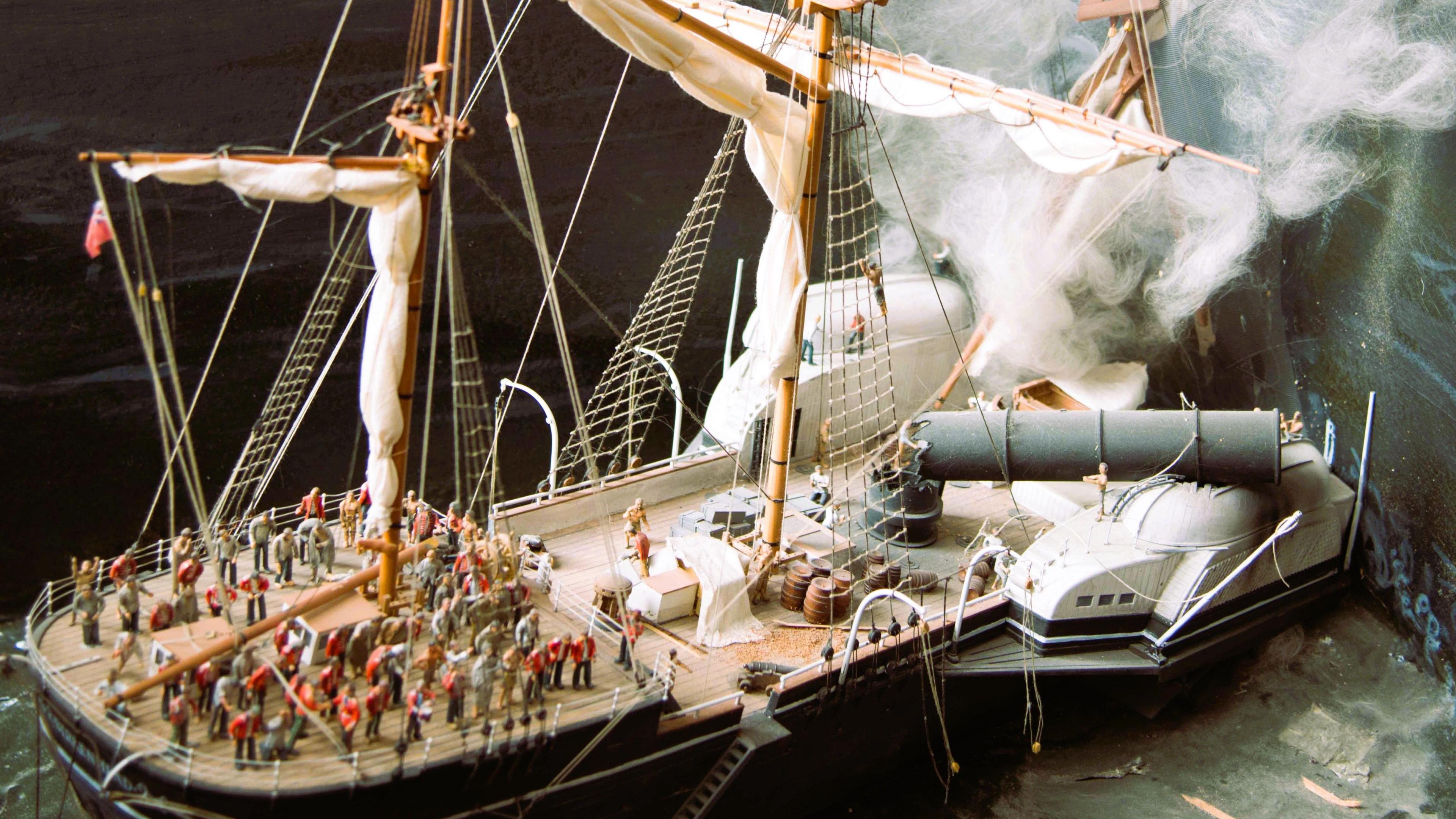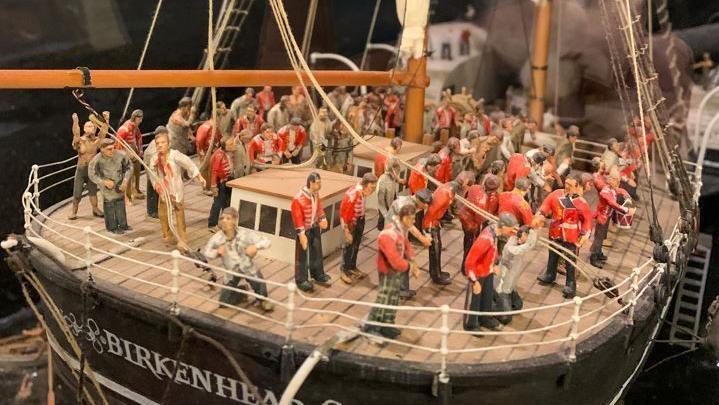The remarkable origins of 'women and children first'

The Fusilier Museum in Warwick will explore the sinking of HMS Birkenhead
- Published
Most will have heard the phrase "women and children first" - but few are likely to know where it comes from.
Its remarkable origin story is set to be retold as a museum commemorates 350 years since the Royal Warwickshire Regiment was founded.
The Fusilier Museum in Warwick will explore the sinking of HMS Birkenhead, a maritime disaster that established the now-famous protocol.
Expert David Seeney says it set a model of military discipline that would inspire soldiers for generations to come.
During a talk on 30 March, he will explain how HMS Birkenhead, one of the first iron-hulled ships built for the Royal Navy, was transporting troops and their families to Algoa Bay in South Africa.
It was 26 February 1852 when it struck rocks about 140km from Cape Town.
At the time, limited serviceable lifeboats meant the captain ordered "women and children first" in the evacuation of the ship.
Brave soldiers from ten different regiments, including Warwickshire, held firm while 193 people were saved.
The rest of the 643 people on board sadly perished.

The museum boasts a "spectacular model" showing the sinking ship with soldiers standing on deck
The act of bravery was recognised in a series of memorials including a South Africa medallion in 1977 on the 125th anniversary of the sinking, the museum said.
It is also in possession of a silver spoon set belonging to a married couple who were travelling on the fateful voyage.
And the museum boasts what it called a "spectacular model" showing the sinking ship with soldiers standing on deck.
Follow BBC West Midlands on Facebook, external, X,, external and Instagram, external, Send your story ideas to: newsonline.westmidlands@bbc.co.uk, external